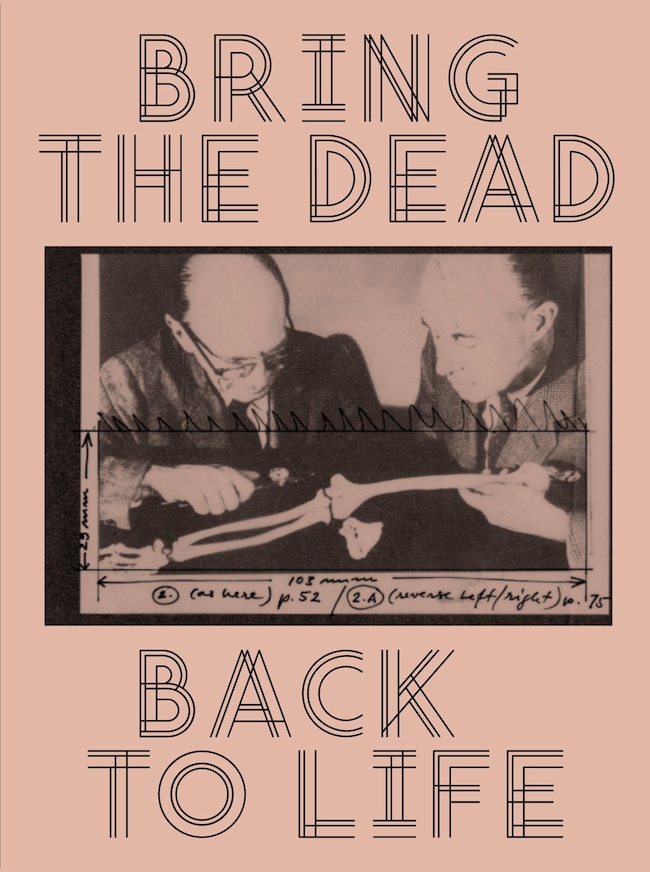via new-aesthetic
Identity performance and the searchable archive on Facebook
The problem is not that Facebook exposes how we’ve changed or that identity is performative in general; the problem is the searchable archive. It’s that Facebook stores details about our identity performance as decontextualized information. It encourages the idea that identity isn’t embedded in context but is strictly a matter of data. This makes us vulnerable to having our identities “remixed” by anyone who can access the identity information about us and verify we are connected to it somehow. It’s as though social media lets people rewrite your diary, forcing you to correct the record with further additions, which can be further remixed — possibly by enemies, possibly by bots or algorithms — until the undermining becomes virtually instantaneous. Then identity becomes a matter of continually shouting your current version of yourself in every possible medium to counter the competing versions.
Music Video Shot Entirely With 1095 Instagram Frames
Matt Buchanan on Buzzfeed FWD:
Composed of 1,095 still frames processed through Instagram, this is the first music video, The Plastics Revolution claim, “done entirely on Instagram without any third party alterations.” That may well be true for a video professionally produced and shot by a band itself, but there are certainly music videos made entirely or mostly with images sourced from Instagram — Ellie Goulding‘s video, for instance. And this The Vaccines video for “Wetsuit” relies heavily on fan-shot Instagram snaps.
Bifo and the end of the future
Berardi recognizes 1977 as the end of the future. He cites the punk movement’s declaration of “No Future.” Berardi says, “The future is not a natural dimension of the mind. It is a modality of projection and imagination, a feature of expectation and attention, and its modalities and features change with the changing of cultures. Futurism is the artistic movement that embodies and asserts the accomplished modernity of the future.” 1977 signaled the shift from future as utopia to future as dystopia. This inversion of the future threatens the collective imagination. Where the future was once a promise for progress, there is now only the precariousness of life. The possibility of devastation and catastrophe has caused a general paralysis of the will. This paralysis of will is founded in the triumph of general depression across the population.
New iconography of social media signage
I’ve been photographing the physical articulation of web-based user interactions, most often in the form of signage that isn’t, shall we say, necessarily produced by professional designers. I’m seeing a graphic vernacular emerge as businesses encourage patrons to hop on their digital bandwagon, as though the distance between the David Z shoe shop (566 Broadway, NYC) and the Internet were nonexistent—which is technically true! Think about it though: Would you, upon spotting a sidewalk-level sign such as this one, break stride to whip out your iPhone and Like, Tweet, or … Instagram your (ostensibly newly-purchased) shoes? If these graphic icons don’t call us to the web to perform intended user interactions, how do they function “IRL”?
Adam Rothstein on internet sub-genres
From thestate:
There is something just so “meta-Youtube” about this video, and intentionally so. The fan/friend sing-along, shot from an Apple laptop using Photobooth. Screen-capped, choppily spliced together. Note the desktop backgrounds. Watch it a few times, look at the file names scattered across the UI. You can feel the reality of young people, scattered across cheap apartments in major cities. But then note the time from the OS X header. It doesn’t change between cuts. Is this all an elaborate put-on? Or was it such an elaborate production, that everyone screen-capped themselves in unison, in the same time zone? It is impossible to tell. The internet wells up with this sort of stuff, dripping off of it in fluid drops, splattering seapunk, its similar subgenres, and thousands with no relation, every minute of every day.
Blogging and nostalgia
Hila Shachar on Metamodernism:
When I look at a teenager’s blog filled with outfit posts from the 1940s or 1950s, exclaiming that it would be ‘cool’ to go back to the past, I don’t feel like I’m watching a new phenomenon. The same thing has been said many times by audiences who have watched Heritage films or period television dramas, dreaming of a ‘simpler’ and ‘better’ past. Of course, we all know the past was rarely ‘better’, and for the majority of the working population, for minorities and for women, it was downright hellish in many cases. So why do we continue to enjoy the delusion of a beautiful picturesque notion of history?
My answer would be that the representation of the past is often all about the present; it is one of the ways through which we discuss, debate and define our current beliefs, and engage with our contemporary problems. The way we represent history on screen and on blogs has very little to do with the way ‘it really was’, but with the way we want it, and need it, to be.
Again, A Time Machine: from distribution to archive
Again, A Time Machine: from distribution to archive is produced in response to, and as an extension of, the touring exhibition in six parts, Again, A Time Machine (2011-12). Playing with time and words, and structured around the confluence of archive and distribution, this book presents an assemblage of material that extends Book Works’ touring exhibition. Specifically engaging with the circuits of practice that have materialised in the form of books, writing, magazines, language, spoken word, performative research and archival practice
via manystuff
Photoset of Le Corbusier in the USSR
From The Charnel House:
Moscow is a factory for making plans, the Promised Land of technicians (without a Klondike). The country is being equipped!
— Le Corbusier, “The Atmosphere of Moscow” (1930)
This post includes pictures of Le Corbusier traveling in the USSR, attending conferences, building sites, and on one of Eisenstein’s movie sets (for The Old and the New).
John Yau reviews “Meme” by Susan Wheeler
On Hyperallergic, John Yau writes:
Despite the autobiographical current running through these poems, they are remarkably and, to my mind, powerfully free of anecdotes, overt narratives, and stories—all the things that are central to confessional poetry as they sequester it. Wheeler’s poems don’t culminate in revelations or epiphanies. Rather, I get the sense that the “Maud Poems” are carefully considered aural montages of a particularly powerful and recognizable voice, of distinctive phrases and orders of syllables that implanted themselves in Wheeler. In order to write these poems, the poet seems to have taken dictation a la Jack Spicer.
…From limerick to elegy and prayer, and from prose to nursery rhyme, Wheeler uses different forms and ways of juxtaposing words, phrases and stanzas. Humor and sadness, celebration and dirges are inseparable. Her poems are infectious. I haven’t been able to shake myself free of them, but I am not trying to.


